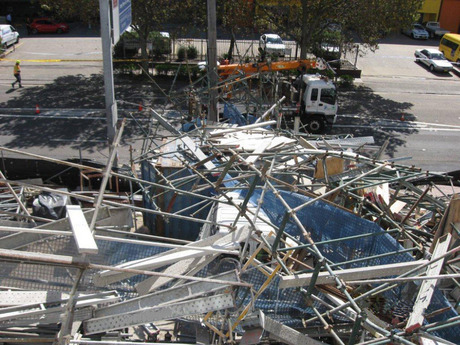Scaffold collapses: safety alert

Recent incidents involving scaffolds collapsing on job sites has prompted WorkCover NSW to release a safety alert highlighting the potential risks to workers’ safety.
The two incidents occurred when scaffolding had been reconfigured during the final stages of a building construction.
One incident saw the framework fall onto a public street allegedly causing injury to several workers. No-one was injured in the second incident when the scaffolding collapsed into a laneway and neighbouring properties.
What actions can you take?
WorkCover NSW gives the following recommendations for ensuring worker safety around scaffolding:
- Ensure the scaffold remains stable and supports the loadings imposed at all times ie, during erection, in situ, during and after any alterations, and when dismantling.
- Use a scaffold suitable for the construction process.
- Ensure the scaffold can withstand any anticipated loads or forces - eg, strong winds.
- Ensure the scaffold is adequately tied to its supporting structure, in accordance with instructions from a competent person - if this is not possible, consult with the scaffold designer, manufacturer, supplier or an engineer.
- Develop systems of work that allow construction activities, such as bricklaying, painting, rendering, glazing or cladding installation to be completed without unplanned changes or removal of scaffold ties - eg, work down from the top of a building as the scaffold is progressively dismantled or tie the scaffold to its supporting structure so that it does not interfere with the work.
- Display warning signs to prevent unauthorised access to the scaffold when it is incomplete and left unattended.
- Ensure the scaffold can’t be damaged by vehicles, plant, equipment or materials.
Get licensed and trained
- Ensure only competent persons with a relevant class of high risk work licence for scaffolding undertake scaffolding work*, including making alterations to existing scaffolding, and regularly inspect the scaffolding ties and equipment.
- Provide all workers with adequate information, instruction, training and supervision regarding the control measures required to prevent the collapse of the scaffold.
- Know the duty rating (light, medium, heavy or special) and number of decks that can be loaded within a bay and don’t overload the scaffold - eg, by storing scaffold components on decks when making alterations.
- Prepare a safe work method statement.**
*Scaffolding work means the erection, alteration or dismantling of a temporary structure erected to support platforms from which a person or object could fall more than 4 m.
**For high risk construction work; for example, when there is a risk of a person falling more than two metres, you must prepare and comply with a safe work method statement in accordance with Part 6.3, Division 2 of the Work Health and Safety Regulation 2011.
View the full alert here: http://www.workcover.nsw.gov.au/news/safety-alert/scaffolding-collapse.
Further information
Download the general guide for scaffolds and scaffolding work or access the Australian Standards: AS/NZS1576 Part 1: Scaffolding - general requirements; and AS/NZS4576: Guidelines for scaffolding.
$540K fine for underground mining contractor after fatal rock fall
A mining contractor has been fined $540,000 after a rock fall in a ventilation shaft of an...
Tradie resources available ahead of Thursday's R U OK?Day
Ahead of R U OK?Day on 11 September, dedicated tradie resources are available — this...
National Safe Work Month activity kit released
Ahead of next month's National Safe Work Month, Safe Work Australia has released its activity...







